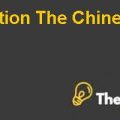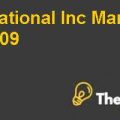DuPont Corporation: Sale of Performance Coatings Case Solution
Introduction
In January 2012, Ellen Kullman, CEO and chairman of DuPont, faced a pivotal decision regarding the future of the company's Performance Coatings (DPC) division. This case serves as an insightful exploration of the complexities of valuing a leveraged buyout (LBO). DuPont was at a crossroads, contemplating whether to retain ownership of DPC or divest the division to an external party. The case delves into the heart of this dilemma, focusing on the valuation of the division and examining the consequences of either keeping it within DuPont's corporate portfolio or selling it to an external entity.
With a substantial transaction size of around $4 billion, the pool of potential strategic buyers within the industry was limited, thereby making private equity (PE) firms the primary contenders for this acquisition. The case equips students with a fundamental adjusted present value (APV) model for DPC's standalone valuation and challenges them to make strategic adjustments that would mirror the division's potential value under PE ownership. These adjustments involve key factors such as EBITDA growth, multiple arbitrage, and increased leverage. The ultimate goal is to illuminate and deliberate upon the divergent approaches to valuing a public company using unlevered free cash flows, as opposed to the valuation methodology applied by a private equity sponsor, which relies on residual (leveraged) cash flows.
Problem Statement
The case revolves around the key decision faced by the organization whether to retain or sell the $4 billion Performance Coatings (DPC) division. The primary problem is to determine the division's value under different scenarios: remaining under DuPont's control or being sold to private equity (PE) firms, the most likely bidders due to the transaction's size.
There is a need to assess the standalone and PE-owned value, adjusting for factors like EBITDA growth, exit assumptions, and leverage. The case highlights the contrast between public company valuation (unlevered cash flows) and PE sponsor valuation (leveraged cash flows) and is suitable for courses on private equity, corporate finance, or deal valuation.
Situational Analysis
DPC as an Acquisition from a PE Firm’s
From a private equity (PE) firm's perspective, DuPont Performance Coatings (DPC) can be an attractive acquisition for several reasons, which firstly include DPC has history of generating consistent and strong cash flows. This provides financial stability and the potential for attractive returns on investment. The PE firm's projections for reasonable operating improvements, as outlined in the case, show a strategy for growing DPC's sales and profitability over the next five years. This growth potential can be appealing to investors.
If the PE firm has experience or expertise in the coatings or chemical industry, it can leverage its knowledge to enhance DPC's operations and create additional value. If the PE firm has other portfolio companies or investments in related industries, there may be opportunities to create synergies by integrating DPC into their existing businesses.
Potential Risks Related to the Deal
However, there are also potential risks associated with the deal in which economic factors come first because the coatings industry is influenced by economic cycles. Downturns in the global economy can affect demand for coatings products, potentially impacting the financial performance of DPC (Susan Chaplinsky, 2014). The coatings industry is highly competitive. New entrants, changing customer preferences, and evolving regulations can affect DPC's market position and profitability.
Achieving the projected improvements and growth as outlined in the Improvements case can be challenging. Deviations from the business plan may affect the expected returns. The PE firm needs to have a robust operational plan and risk mitigation strategies in place. The coatings industry is subject to environmental regulations. Changes in regulations can require costly adjustments in manufacturing processes and may expose DPC to environmental liabilities. The PE firm must assess these risks and compliance costs.
PE Firm’s Investment Thesis
The PE firm's investment thesis for DPC can be summarized as follows:
Growth Focus: The PE firm aims to unlock the growth potential of DPC by implementing strategies to drive revenue and profitability growth. This might involve expanding market share, exploring new markets, and introducing innovative products.
Cost Management: The firm intends to optimize operational costs, improve supply chain efficiency, and reduce overhead. Cost management is crucial for boosting profitability.
Exit Strategy: The PE firm's investment horizon and exit strategy should be clearly defined. Whether it plans to exit through a sale to a strategic buyer or another financial investor, the firm must outline the path to maximize returns.
Value Creation: The firm seeks to actively manage DPC, creating value through operational improvements, strategic partnerships, and if needed, potential acquisitions to strengthen DPC's position in the coatings industry.........
DuPont Corporation Sale of Performance Coatings Case Solution (1)
This is just a sample partial case solution. Please place the order on the website to order your own originally done case solution.












